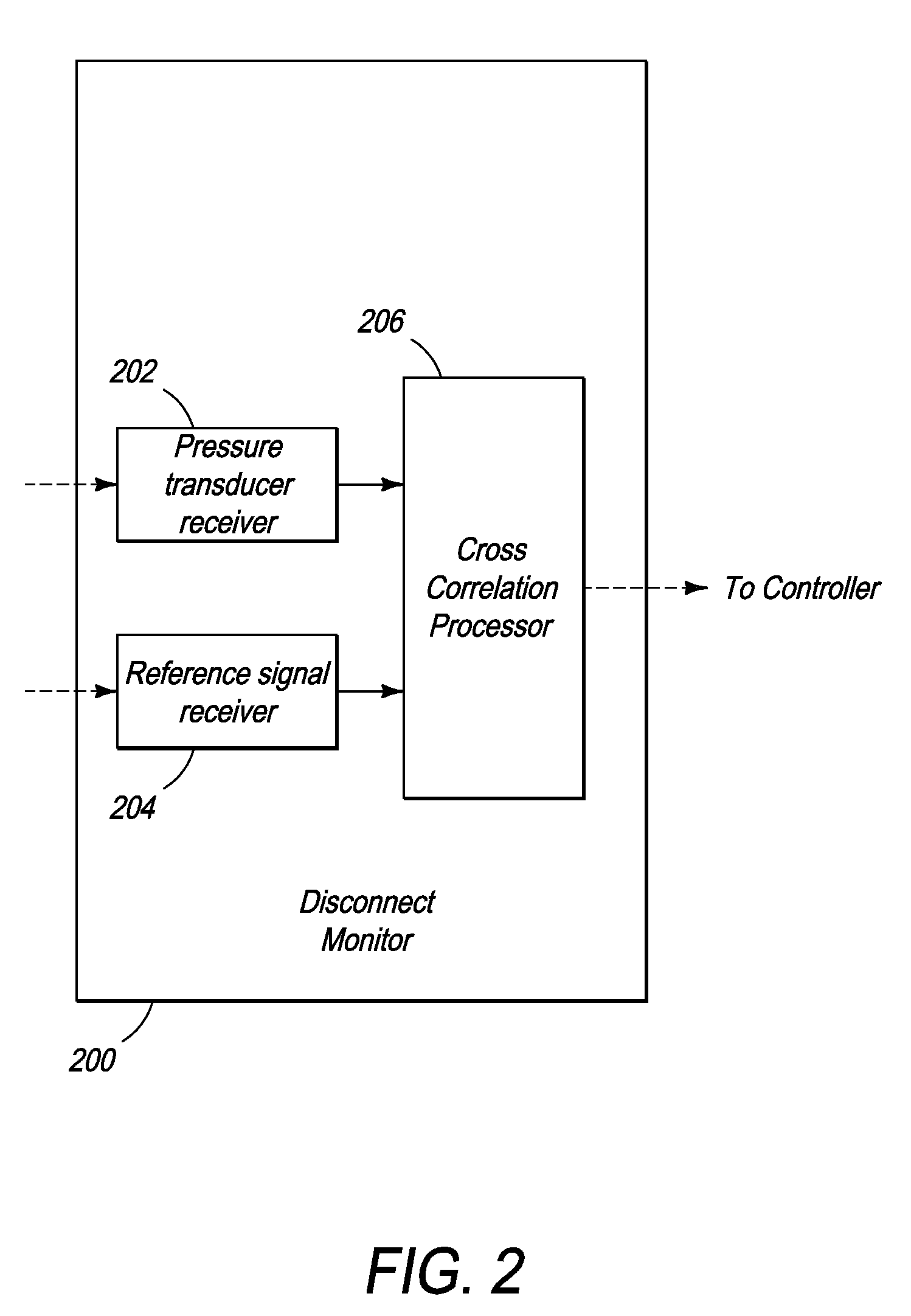System and Method for Detection of Disconnection in an Extracorporeal Blood Circuit
a blood circuit and extracorporeal technology, applied in the field of medical equipment and procedures, can solve the problems of blood circuit disconnection, disruption of blood circuits, and serious and often fatal consequences, and achieve the effect of preventing the disconnection of blood circuit needles corresponding to arterial supply lines or venous return lines
- Summary
- Abstract
- Description
- Claims
- Application Information
AI Technical Summary
Problems solved by technology
Method used
Image
Examples
Embodiment Construction
[0023]The present invention describes an apparatus and method for detection of disconnection in an extracorporeal blood circuit being used for any blood processing treatment routine. Examples of blood processing treatment routines include hemodialysis, hemofiltration, ultrafiltration, apheresis, etc. Vascular access for establishing an extracorporeal blood circuit is typically obtained by using a transdermal needle or a luer connected catheter. The apparatus and method described in the present invention uses the pressure pulse produced by a patient's beating heart as an indicator of an intact needle or catheter connection to the vasculature. The pressure pulse produced by a patient's heart is small; more so, in the venous return line of an extracorporeal blood circuit. In order to detect the small pressure pulse the present invention uses cross correlation methodology wherein a reference cardiac signal is cross correlated to the pressure pulse signal.
[0024]The following disclosure i...
PUM
| Property | Measurement | Unit |
|---|---|---|
| Length | aaaaa | aaaaa |
| Time | aaaaa | aaaaa |
| Pressure | aaaaa | aaaaa |
Abstract
Description
Claims
Application Information
 Login to View More
Login to View More - R&D
- Intellectual Property
- Life Sciences
- Materials
- Tech Scout
- Unparalleled Data Quality
- Higher Quality Content
- 60% Fewer Hallucinations
Browse by: Latest US Patents, China's latest patents, Technical Efficacy Thesaurus, Application Domain, Technology Topic, Popular Technical Reports.
© 2025 PatSnap. All rights reserved.Legal|Privacy policy|Modern Slavery Act Transparency Statement|Sitemap|About US| Contact US: help@patsnap.com



